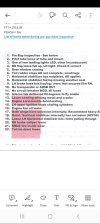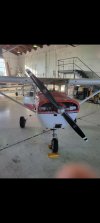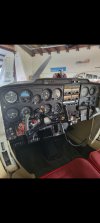ahmad
Pre-takeoff checklist
Looking at a couple of planes for time building. I am at 350 hrs trying to get to 1200+ hrs. Local airport C172 rents for $150/Hr. I am going to fly a ton to get those hours as soon as I can.
So,
The C150 (N5523G)is 1969 model with just shy of 1100 SMOH. So, 700 hrs left before an overhaul is needed?!? VFR but has two nice radios and in somewhat decent shape. Will need a transponder and ADSB compliant. Asking price is 30K. I think I can get it for 25K.
The C152(N4590P) is a 1980 with 900 hrs SMOH. So, 1500 Hrs before an overhaul is needed?!? Again basic VFR but in decent shape. Has pretty much everything I need except really old radios and no GPS. I would need to spend a little on it to get it to my liking. Perhaps 5K? Asking price is 55K. I am thinking I might get it for 50k.
My CFI is pointing me more towards the C152 but again this will be mostly for my time building.
Need your opinions please
So,
The C150 (N5523G)is 1969 model with just shy of 1100 SMOH. So, 700 hrs left before an overhaul is needed?!? VFR but has two nice radios and in somewhat decent shape. Will need a transponder and ADSB compliant. Asking price is 30K. I think I can get it for 25K.
The C152(N4590P) is a 1980 with 900 hrs SMOH. So, 1500 Hrs before an overhaul is needed?!? Again basic VFR but in decent shape. Has pretty much everything I need except really old radios and no GPS. I would need to spend a little on it to get it to my liking. Perhaps 5K? Asking price is 55K. I am thinking I might get it for 50k.
My CFI is pointing me more towards the C152 but again this will be mostly for my time building.
Need your opinions please





